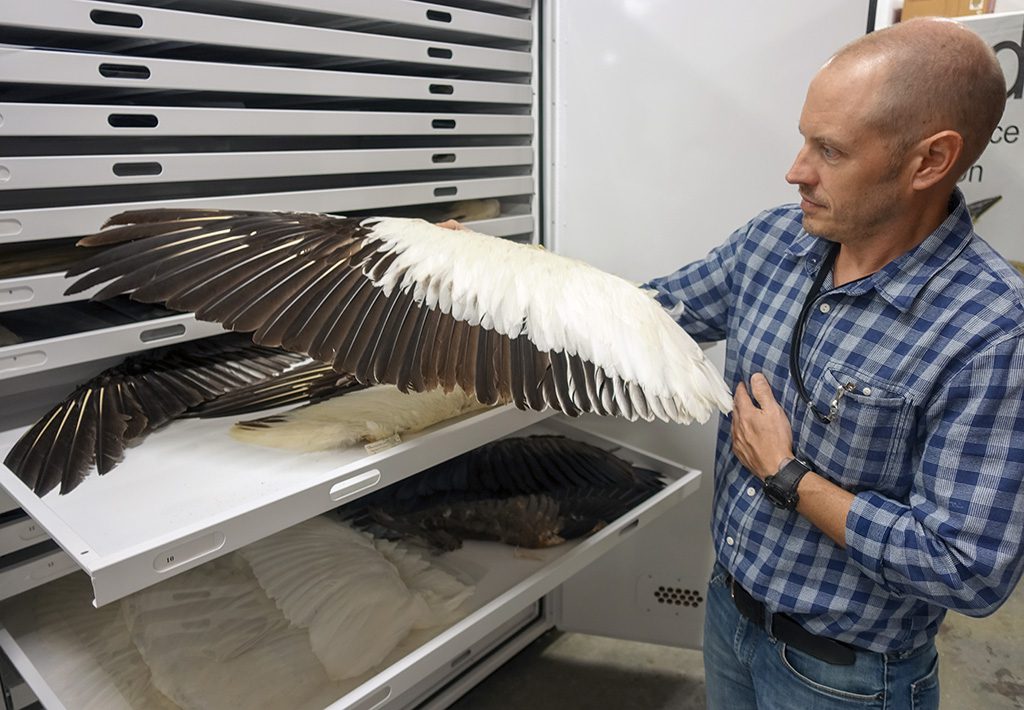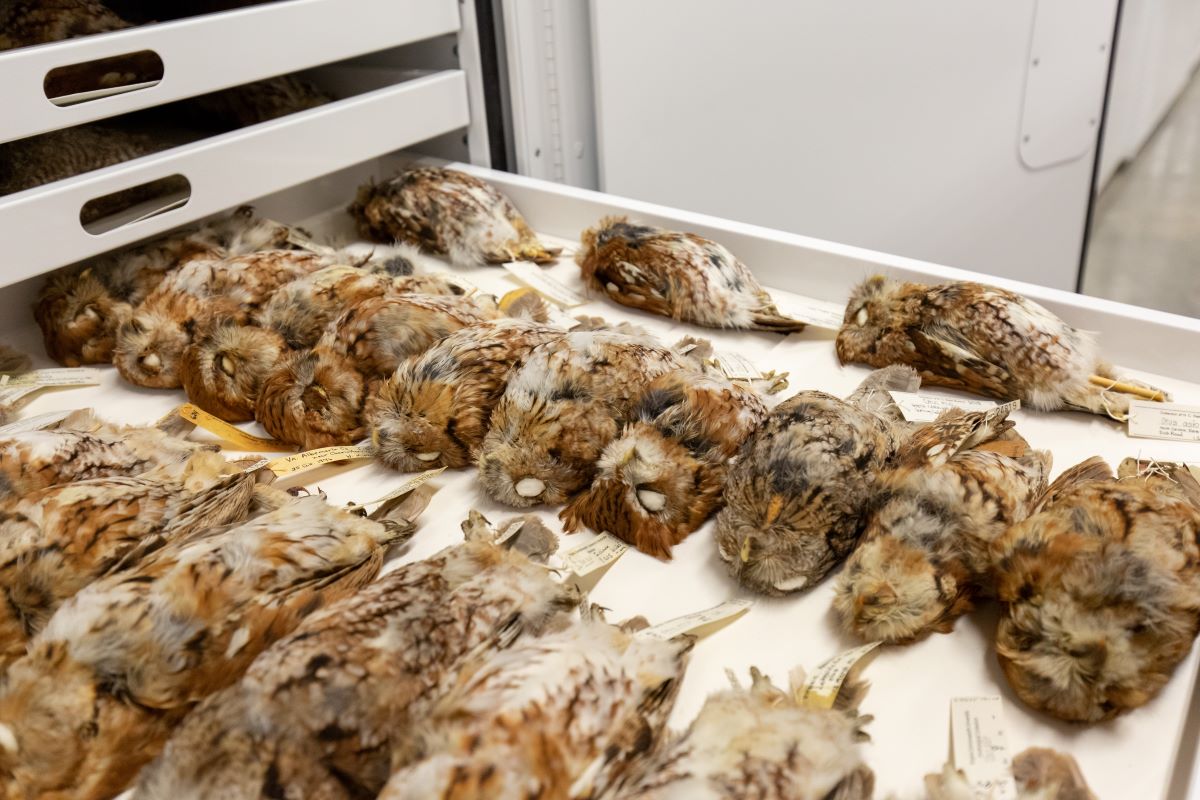
When bird expert Brian O’Shea travels for field work, he heads to northeast South America, taking a similar route as the long-distance migratory shorebirds he studies.
O’Shea, who has been the ornithology collection manager for the North Carolina Museum of Natural Sciences since 2011, heads to Guyana or Suriname three or four times a year for various projects, including documenting major shorebird concentration points.
Supporter Spotlight
He said there is a “massive effort” to study the diverse group of shorebirds that migrate between the Arctic and Guiana Shield, the region between the mouths of the Orinoco and Amazon rivers.
Most shorebirds are extreme long-distance migrants. After spending four to six weeks in the Arctic during the summer to breed, “they fly extraordinary distances, sometimes nonstop, across patches of ocean that take them several days to cross.”
There’s been quite a bit of tracking work on shorebirds, especially on larger species, and a lot of those birds move up and down the coast.
Of the 30 or so shorebird species that come through North Carolina, “I would say roughly 20 of those species are regularly along the coast of the Guianas as well,” O’Shea said.
His work studying these shorebirds in South America helps us better understand the behaviors of and threats to the same birds we see on the North Carolina coast.
Supporter Spotlight
Worldwide, shorebirds have declined quite a bit, at least 40% with the long-distance migrants, he said, adding those found along the coast of the Guianas having declined more than most.
“By most accounts, the populations of certain shorebirds from the coast of the Guianas are down roughly 80% from where they were 40 years ago. They are declining very rapidly and there’s a lot of interest in identifying key habitat and taking whatever conservation measures we can to help protect them,” O’Shea continued.
“The network of people that is working on this problem and studying shorebirds basically encompasses the entire Western Hemisphere because the birds just travel so much. So, it’s a massive effort involving multiple agencies.”
O’Shea found himself in Guyana in 2000 as the resident ornithologist for the Smithsonian program, Biological Diversity of the Guiana Shield, after graduating from Reed College in Portland, Oregon, in 1998 with a bachelor’s in biology. He earned his doctorate in biological sciences in 2009 from Louisiana State University in Baton Rouge, where he learned how to care for specimens in a museum setting, before joining the Raleigh museum to oversee the ornithology collection.
“I am sort of the guardian of the collection of about 27,000 bird specimens,” he said of the collection that has been growing since about 1879.
The collection contains thousands of seabird specimens including skins, skeletons, fluid-preserved birds, several thousand egg sets, about 1,000 voice recordings of North Carolina birds and two rare specimens, the Carolina parakeet and the passenger pigeon, both extinct, according to the website.

The coast of the Guianas has, historically, been a major stopover for shorebirds flying north across the Atlantic to get to North America, or flying south from New England or the coast of the Carolinas, O’Shea said.
“These birds are, right now, subject to a lot of different pressures all around,” he added. In addition to climate change and pollution, there’s coastal development. These “cascading ecosystem effects” can impact shorebirds disproportionately because of the rather narrow zones that they inhabit along the edges of the continents and on the islands, particularly causing fluctuations in prey abundance.
One issue in Guyana he has been working on is shorebird hunting. Many of the shorebirds are protected while in the United States, but when they leave North America, they leave all the protection that they have here and fly to places where there is very little in the way of protection, he explained.
There has been shorebird hunting in Guyana and throughout the Caribbean, for some time. In places like Barbados, there are shooting swamps, for example, which are areas where shorebirds tend to stop and people go there to shoot the birds, often for sport.
In Guyana, the hunting method is a little different and “is pretty brutal,” O’Shea said. The hunter will whip a wire back and forth to maim or kill shorebirds flying across mudflats.
Shorebird is considered a luxury food item and the hunter will sell the meat to a market or eat it themselves. “And there’s no regulation whatsoever. It’s not even really on the radar of wildlife management in a place like Guyana,” he said.
O’Shea has been working with a grassroots organization, Guyana Marine Conservation Society, on education and outreach about hunting shorebirds with the hope to get laws implemented that will at least establish limits on harvest.
Another concern is an oil-related disaster. While Guyana has historically been one of the poorest countries in the Western Hemisphere, a few years ago oil was found off the coast and that’s completely transforming the economy, he said.
“There’s been a lot of concern, not only with sea level rise because 90% of the population lives right along the coast, but also because of the potential for pollution related to the oil development,” he said. “There’s a lot of attention being drawn to the coast now, and shorebirds are just a part of that. You can imagine if there were an oil-related disaster there that it would impact these shorebird staging areas, which are so vital.”

When he’s in the U.S., he’s caring for the thousands of specimens making up the ornithology collection in the museum.
The museum has a long legacy of coastal specimen collection, including the sizable seabird collection started by Dave Lee, who was at the museum from 1975 to 2003, O’Shea said. Lee was a very passionate naturalist who collected the large numbers of seabirds off the coast of the Outer Banks, and “helped document a lot of the birds that we know are out there today at a time when nobody else is really doing it.”
The museum also has the largest specimen series of the black-capped petrel, a bird that breeds mainly on Hispaniola and is now listed as endangered. The bird is quite common off the Outer Banks. “I believe we have 66 of them. And that’s more than any other museum in the world,” he said.
Rehabilitation centers on the coast like Outer Banks Wildlife Shelter in Carteret County and Sea Biscuit Wildlife Shelter in Oak Island contribute to the state’s specimen collection, too.
“When they get birds that don’t survive, they come to us and then we either work to prepare them ourselves and put them in our collection, or we send them to other museums around the country,” he said. “I am doing this to make sure the birds are preserved. We’re establishing long-term documentation of what’s going on in the oceans with these specimens.”
He explained that scientists have used the specimens for a variety of research, from studying the accumulation of plastics in seabirds’ stomachs, to determining where these birds breeding, to tracking ocean pollution by sampling bird feathers from 40 to 50 years ago compared to now. And there’s “a lot of other things that we don’t even know we can do yet. We’re just putting birds away and at some point down the road when the technology catches up the shorebirds will be there.”








